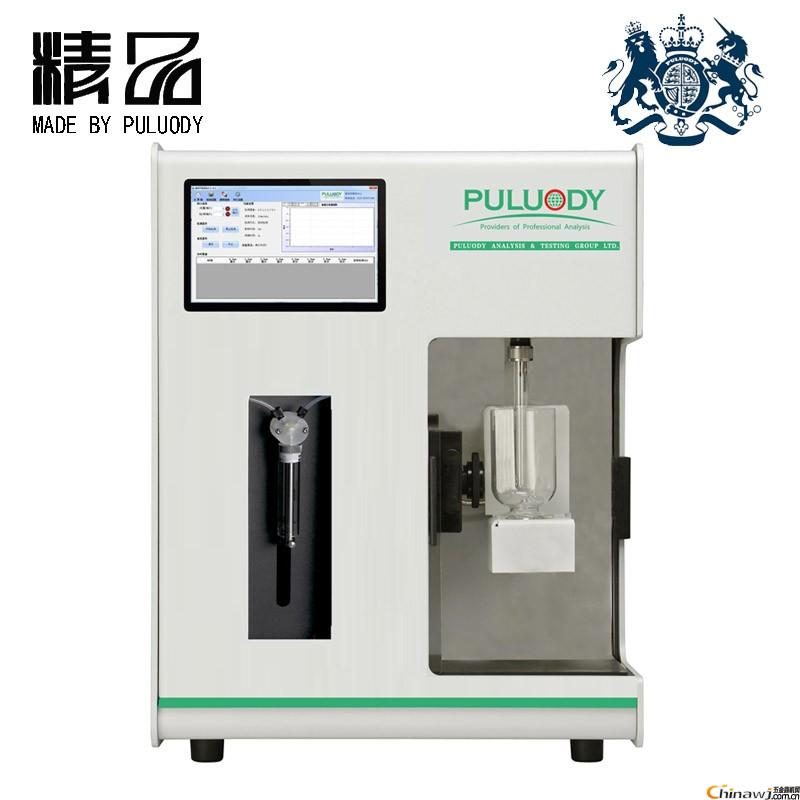As early as 1975, it was proposed to check the insoluble particles of a large volume of single-dose liquid. After filtering with a filter membrane, the particle size was measured and counted with a microscope and a micrometer to calculate the number of particles larger than 10μm and 25μm per 1mL. . Later, the US Pharmacopoeia gradually expanded the application of insoluble particulate inspection methods, including large-volume multi-dose preparations, small-volume single-dose preparations, even water-insoluble preparations, powder injection preparations, etc. The PLD-601A Pharmacopoeia Insoluble Particle Tester is used in most pharmacopoeias.
Until 1995, the United States Pharmacopoeia added the photoresist method to the original microscope method. Because this method is highly intelligent and has a wide range of applications, it has very good development prospects. The United States Pharmacopoeia also places this method in the In the first place. Due to the relativity of instrument analysis and the complexity of instrument calibration, the United States Pharmacopoeia also very clearly stipulates that the unqualified samples tested by the photoresist method should be re-examined with a microscope. The final judgment result should be the result of the microscope method. quasi.
ã€British Pharmacopoeia】
The method of inspection of insoluble particles was also collected very early. It was first seen in the 1973 edition of the Pharmacopoeia using the microscope method, which requires that there must be particle control items for infusions of more than 500mL, and that there are less than 1000 particles per mL of liquid ≥2μm and less than 100 particles ≥5μm Pcs.
Until the resistance method was collected in 1980, and it was suggested that instruments such as the resistance method could not solve the problem, the photoresist method could also be used for inspection. However, in the newly published 1998 edition of the British Pharmacopoeia, this inspection has undergone tremendous changes. The resistance method used for nearly 25 years has been replaced by the photoresist method. The photoresist method has become the inspection method of the new British Pharmacopoeia. The particle inspection instrument belongs to the photoresist method.
ã€Japanese Pharmacopoeia】
It was first seen in the 1980 edition of the Pharmacopoeia, using the microscope method, until the 1995 edition of the Pharmacopoeia introduced the photoresist method as the first choice, the method and limits are the same as the US Pharmacopoeia, and the test results that meet the requirements of the photoresist method can be arbitrated. The rule of microscope is used for some samples and small-dose injections (less than 25mL) that cannot be detected by the photoresist method.
ã€European Community Pharmacopoeia】
With the construction of European integration, the reasons for striving for harmonization are the same as the British and American Pharmacopoeia.
The Chinese Pharmacopoeia monitors particulate contamination in injections:
[Chinese Pharmacopoeia] From the 1985 edition to the 1995 edition, the insoluble particles in the injection were examined by microscopy. Check two levels of ≥10μm and ≥25μm, which are basically the same as the US Pharmacopoeia standards.
On the basis of the 2000 edition of [Chinese Pharmacopoeia] microscopic examination of insoluble particles in injections, a second method, the photoresist method, was added.
In the 2005 edition of [Chinese Pharmacopoeia] increased the detection of low-dose injections.
[Chinese Pharmacopoeia] The first draft of the 2005 edition revised the monitoring of insoluble particulate contamination in injections, and revised the photoresist method as the first method and the microscope method as the second method. The revised results are basically consistent with the United States, Britain, the European Community and Japan.
Pharmacopoeia Insoluble Particle Tester Introduction:
The Pharmacopoeia Insoluble Particle Tester can monitor and analyze liquid particle size, cleanliness, and contaminants; pharmaceutical equipment and its daily maintenance and maintenance; abrasion tests in pharmaceutical machine parts; insoluble particle tests in pure solutions and ultrapure water; drugs Package material cleanliness test; human bone adhesion particle monitoring; pharmacopoeia insoluble particle detection;
The Pharmacopoeia Insoluble Particle Tester adopts the core technology of Protea, the "photoresist measurement particle", and can be built with various standards required by the user according to the user's requirements.
The precision plunger pump and ultra-precision flow electromagnetic control system are used to achieve dual control of constant injection speed and accurate injection volume. The sampling volume is 1ml ~ infinitely set at random, accurate and accurate.
The sensor adopts Protea's classic "photoresist measurement particle" sensor, which is more suitable for more than 510 international standards based on this principle.

Size: 1/2"-72"
Wall Thickness: SCH10, SCH20, SCH30, STD, SCH40, SCH60, XS, SCH80, SCH100, SCH120,SCH140, SCH160, XXS, DIN, JIS standard thickness
Standard: ASTMA234,ASTM A420,ANSI B16.9/B16.28/B16.25, Asme B16.9, JIS B2311-1997/2312, JIS B2311/B2312, DIN 2605-1/2617/2615, GB 12459-99,EN Standard etc.
Material: Q235, 20#, 10#, Q345, A234 WPB, WP5, WP9, WP11, ST37.0, ST35.8, ST37.2, ST35.4/8, ST42, ST45, ST52, ST52.4 STP G38,STP G42,STPT42, STB42, STS42, STPT49, STS49
Surface: Black painting,varnish paint, anti rust oil, hot galvanized, cold galvanized, 3PE,etc.
Package: Plastic film,wooden cases ,wooden pallet,or on customers' request
Capacity: 50000tons/year
Advantages
1. Reasonable price with excellent quality
2. Abundant stock and prompt delivery
3. Rich supply and export experience, sincere service
4. Reliable forwarder, 2-hour away from port.
A420 Wpl6 Carbon Steel Pipe Fitting,Astm A420 Pipe Fitting,Asme B16.9,A420 Wpl6 Pipe Fitting
Shijiazhuang Bang dong Pipeline Technology Co,Ltd. , https://www.bd-pipefitting.com